首页 > SCI期刊 > SCIE期刊 > 生物学 > 中科院4区 > JCRQ3 > 期刊介绍
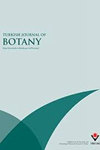
评价信息:
影响因子:1.5
年发文量:43
《土耳其植物学杂志》(Turkish Journal Of Botany)是一本以PLANT SCIENCES综合研究为特色的国际期刊。该刊由Turkiye Klinikleri Journal of Medical Sciences出版商创刊于1994年,刊期Bimonthly。该刊已被国际重要权威数据库SCIE收录。期刊聚焦PLANT SCIENCES领域的重点研究和前沿进展,及时刊载和报道该领域的研究成果,致力于成为该领域同行进行快速学术交流的信息窗口与平台。该刊2023年影响因子为1.5。CiteScore指数值为2.9。
The Turkish Journal of Botany is published electronically 6 times a year by the Scientific and Technological Research Council of Turkey (TÜBİTAK) and accepts manuscripts (in English) covering all areas of plant biology (including genetics, evolution, systematics, structure, function, development, diversity, conservation biology, biogeography, paleobotany, ontogeny, functional morphology, ecology, reproductive biology, and pollination biology), all levels of organisation (molecular to ecosystem), and all plant groups and allied organisms (algae, fungi, and lichens). Authors are required to frame their research questions and discuss their results in terms of major questions in plant biology. In general, papers that are too narrowly focused, purely descriptive, or broad surveys, or that contain only preliminary data or natural history, will not be considered (*).
The following types of article will be considered:
1. Research articles: Original research in various fields of botany will be evaluated as research articles.
2. Research notes: These include articles such as preliminary notes on a study or manuscripts on the morphological, anatomical, cytological, physiological, biochemical, and other properties of plant, algae, lichen and fungi species.
3. Reviews: Reviews of recent developments, improvements, discoveries, and ideas in various fields of botany.
4. Letters to the editor: These include opinions, comments relating to the publishing policy of the Turkish Journal of Botany, news, and suggestions. Letters should not exceed one journal page.
(*) 1. Raw floristic lists (of algae, lichens, fungi, or plants), species descriptions, chorological studies, and plant sociology studies without any additional independent approaches.
2. Comparative morphology and anatomy studies (that do not cover a family, tribe, subtribe, genus, subgenus, section, subsection, or species complexes with taxonomical problems) without one or more independent additional approaches such as phylogenetical, micromorphological, chromosomal and anatomical analyses.
3. Revisions of family, tribe, genus, subgenus, section, subsection, or species complexes without any original outputs such as taxonomical status changes, IUCN categories, and phenological and ecological analyses.
4. New taxa of all plants without any additional independent approaches such as phylogenetical, ecological, chromosomal, chorological and correlational analyses in addition to a detailed macro- and micro-morphological descriptions with quality field and microscopic illustrations of taxonomically important structures and identification key in the taxonomic group.
New records of all plants without any additional independent approaches such as phylogenetical, ecological, chromosomal, chorological and correlational analyses in addition to a detailed macro- and micro-morphological descriptions with quality field and microscopic illustrations of taxonomically important structures and identification key in the taxonomic group may be accepted for peer review if they contain 3 or more new records or taxonomical status update, such as lectotypification, new combinations, transfers, revivals and synonyms.
5. New taxa of algae, lichens, and fungi without any additional independent approaches such as phylogenetical, ecological, chromosomal, chorological and correlational analyses in addition to a detailed macro- and micro-morphological descriptions with quality field and microscopic illustrations of taxonomically important structures and identification key in the taxonomic group.
New records of algae, lichens, and fungi without any additional independent approaches such as phylogenetical, ecological, chromosomal, chorological and correlational analyses in addition to a detailed macro- and micro-morphological descriptions with quality field and microscopic illustrations of taxonomically important structures and identification key in the taxonomic group may be accepted for peer review if they contain 5 or more new records or taxonomical status update, such as lectotypification, new combinations, transfers, revivals and synonyms.
《土耳其植物学杂志》由土耳其科学技术研究理事会 (TÜBİTAK) 每年以电子版形式出版 6 期,接受涵盖植物生物学所有领域(包括遗传学、进化、系统学、结构、功能、发育、多样性、保护生物学、生物地理学、古植物学、个体发育、功能形态学、生态学、生殖生物学和授粉生物学)、所有组织层次(从分子到生态系统)以及所有植物群和相关生物(藻类、真菌和地衣)的稿件(英文稿件)。作者需要根据植物生物学的主要问题提出研究问题并讨论研究结果。一般来说,过于狭隘、纯描述性或广泛调查的论文,或仅包含初步数据或自然历史的论文将不予考虑 (*)。
将考虑以下类型的文章:
1.研究文章:植物学各个领域的原创研究将被评估为研究文章。
2. 研究笔记:这些包括研究的初步笔记或关于植物、藻类、地衣和真菌物种的形态学、解剖学、细胞学、生理学、生化和其他特性的手稿等文章。
3. 评论:对植物学各个领域的最新发展、改进、发现和想法的评论。
4. 致编辑的信:这些包括意见、与《土耳其植物学杂志》出版政策有关的评论、新闻和建议。信件不应超过一页期刊。
(*) 1. 原始植物区系列表(藻类、地衣、真菌或植物)、物种描述、地貌学研究和植物社会学研究,无需任何其他独立方法。
2.比较形态学和解剖学研究(不涵盖具有分类学问题的科、族、亚族、属、亚属、部分、亚部分或物种复合体),没有一个或多个独立的附加方法,例如系统发育、微形态、染色体和解剖学分析。
3. 对科、族、属、亚属、部分、亚部分或物种复合体的修订,没有任何原始成果,例如分类地位变化、IUCN 分类以及物候和生态分析。
4.所有植物的新分类群,无需任何额外的独立方法,如系统发育、生态、染色体、地域学和相关性分析,除了详细的宏观和微观形态描述,以及分类学上重要结构的高质量现场和微观插图和分类群中的识别关键字。
所有植物的新记录,如果包含 3 个或更多新记录或分类状态更新,如后选模式化、新组合、转移、复兴和同义词,则可以接受同行评审。
5.藻类、地衣和真菌的新分类群,无需任何额外的独立方法,例如系统发育、生态、染色体、地域学和相关性分析,除了详细的宏观和微观形态描述,以及分类学上重要结构的高质量现场和微观插图和分类群中的识别关键字。
藻类、地衣和真菌的新记录,如果包含 5 个或更多新记录或分类状态更新(例如后选模式化、新组合、转移、复兴和同义词),则可以接受同行评审。
《Turkish Journal Of Botany》(土耳其植物学杂志)编辑部通讯方式为TUBITAK SCIENTIFIC & TECHNICAL RESEARCH COUNCIL TURKEY, ATATURK BULVARI NO 221, KAVAKLIDERE, ANKARA, TURKEY, 00000。如果您需要协助投稿或润稿服务,您可以咨询我们的客服老师。我们专注于期刊投稿服务十年,熟悉发表政策,可为您提供一对一投稿指导,避免您在投稿时频繁碰壁,节省您的宝贵时间,有效提升发表机率,确保SCI检索(检索不了全额退款)。我们视信誉为生命,多方面确保文章安全保密,在任何情况下都不会泄露您的个人信息或稿件内容。
2023年12月升级版
| 大类学科 | 分区 | 小类学科 | 分区 | Top期刊 | 综述期刊 |
| 生物学 | 4区 | PLANT SCIENCES 植物科学 | 4区 | 否 | 否 |
2022年12月升级版
| 大类学科 | 分区 | 小类学科 | 分区 | Top期刊 | 综述期刊 |
| 生物学 | 4区 | PLANT SCIENCES 植物科学 | 4区 | 否 | 否 |
2021年12月旧的升级版
| 大类学科 | 分区 | 小类学科 | 分区 | Top期刊 | 综述期刊 |
| 生物学 | 4区 | PLANT SCIENCES 植物科学 | 4区 | 否 | 否 |
2021年12月基础版
| 大类学科 | 分区 | 小类学科 | 分区 | Top期刊 | 综述期刊 |
| 生物 | 4区 | PLANT SCIENCES 植物科学 | 4区 | 否 | 否 |
2021年12月升级版
| 大类学科 | 分区 | 小类学科 | 分区 | Top期刊 | 综述期刊 |
| 生物学 | 4区 | PLANT SCIENCES 植物科学 | 4区 | 否 | 否 |
2020年12月旧的升级版
| 大类学科 | 分区 | 小类学科 | 分区 | Top期刊 | 综述期刊 |
| 生物学 | 4区 | PLANT SCIENCES 植物科学 | 4区 | 否 | 否 |
基础版:即2019年12月17日,正式发布的《2019年中国科学院文献情报中心期刊分区表》;将JCR中所有期刊分为13个大类,期刊范围只有SCI期刊。
升级版:即2020年1月13日,正式发布的《2019年中国科学院文献情报中心期刊分区表升级版(试行)》,升级版采用了改进后的指标方法体系对基础版的延续和改进,影响因子不再是分区的唯一或者决定性因素,也没有了分区的IF阈值期刊由基础版的13个学科扩展至18个,科研评价将更加明确。期刊范围有SCI期刊、SSCI期刊。从2022年开始,分区表将只发布升级版结果,不再有基础版和升级版之分,基础版和升级版(试行)将过渡共存三年时间。
JCR分区等级:Q3
| 按JIF指标学科分区 | 收录子集 | 分区 | 排名 | 百分位 |
| 学科:PLANT SCIENCES | SCIE | Q3 | 148 / 265 |
44.3% |
| 按JCI指标学科分区 | 收录子集 | 分区 | 排名 | 百分位 |
| 学科:PLANT SCIENCES | SCIE | Q3 | 158 / 265 |
40.57% |
| Gold OA文章占比 | 研究类文章占比 | 文章自引率 |
| 0.00% | 95.35% | 0.05... |
| 开源占比 | 出版国人文章占比 | OA被引用占比 |
| -- | -- | 0.00... |
名词解释:JCR分区在学术期刊评价、科研成果展示、科研方向引导以及学术交流与合作等方面都具有重要的价值。通过对期刊影响因子的精确计算和细致划分,JCR分区能够清晰地反映出不同期刊在同一学科领域内的相对位置,从而帮助科研人员准确识别出高质量的学术期刊。
| CiteScore | SJR | SNIP | CiteScore 指数 | ||||||||
| 2.9 | 0.363 | 0.811 |
|
名词解释:CiteScore是基于Scopus数据库的全新期刊评价体系。CiteScore 2021 的计算方式是期刊最近4年(含计算年度)的被引次数除以该期刊近四年发表的文献数。CiteScore基于全球最广泛的摘要和引文数据库Scopus,适用于所有连续出版物,而不仅仅是期刊。目前CiteScore 收录了超过 26000 种期刊,比获得影响因子的期刊多13000种。被各界人士认为是影响因子最有力的竞争对手。
历年中科院分区趋势图
历年IF值(影响因子)
历年引文指标和发文量
历年自引数据
2019-2021年文章引用数据
| 文章引用名称 | 引用次数 |
| A new species and a new natural hybrid o... | 13 |
| Bioremoval of toxic dye by using differe... | 11 |
| Properties, variations, roles, and poten... | 11 |
| Effects of exogenous salicylic acid and ... | 7 |
| Predicting the potential distribution ar... | 5 |
| Plant growth promoting properties of pho... | 5 |
| Diversity and functional traits of spont... | 5 |
| Nutlet structures of subsection Fragiles... | 5 |
| A new species of Barssia (Ascomycota, He... | 4 |
| Seed structure and its taxonomic implica... | 4 |
2019-2021年文章被引用数据
| 被引用期刊名称 | 数量 |
| TURK J BOT | 74 |
| PHYTOTAXA | 73 |
| FRESEN ENVIRON BULL | 46 |
| PAK J BOT | 26 |
| APPL ECOL ENV RES | 21 |
| ENVIRON SCI POLLUT R | 19 |
| MICROSC RES TECHNIQ | 19 |
| BIOLOGIA | 18 |
| FUNGAL DIVERS | 16 |
| IND CROP PROD | 15 |
2019-2021年引用数据
| 引用期刊名称 | 数量 |
| TURK J BOT | 74 |
| PLANT PHYSIOL | 55 |
| ANN BOT-LONDON | 51 |
| PLANT CELL | 39 |
| P NATL ACAD SCI USA | 33 |
| J EXP BOT | 31 |
| PLANT SYST EVOL | 31 |
| NUCLEIC ACIDS RES | 29 |
| AM J BOT | 28 |
| FRONT PLANT SCI | 25 |
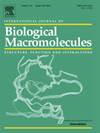
中科院分区:1区
影响因子:7.7
审稿周期:约Time to first decision: 9 days; Review time: 64 days; Submission to acceptance: 82 days; 约2.7个月 约7.8周
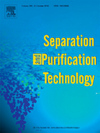
中科院分区:1区
影响因子:8.1
审稿周期:约Time to first decision: 6 days; Review time: 44 days; Submission to acceptance: 54 days; 约4.1个月 约6.8周
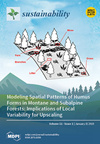
中科院分区:3区
影响因子:3.3
审稿周期:约17.72天 11 Weeks
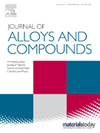
中科院分区:2区
影响因子:5.8
审稿周期: 约2.4个月 约7.6周

中科院分区:2区
影响因子:5.1
审稿周期: 约1.9个月 约2.7周
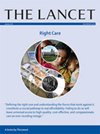
中科院分区:1区
影响因子:98.4
审稿周期: 约3月
若用户需要出版服务,请联系出版商:TUBITAK SCIENTIFIC & TECHNICAL RESEARCH COUNCIL TURKEY, ATATURK BULVARI NO 221, KAVAKLIDERE, ANKARA, TURKEY, 00000。